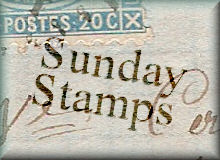
This is a maximum card with United Nations stamps issued to commemorate Philately - The International Hobby. Along the bottom are stamps in three languages and denominations corresponding to the three countries where the United Nations offices are located: New York City, USA; Vienna, Austria; and Geneva, Switzerland. The stamps on the left and right have a design of a stamp being viewed through a magnifier. The stamp in the center has a design of stamps spread out on a table, ready to be put into an album. The stamps all have appropriate first day cancellations dated May 22, 1986. The stamp at the top left of the card has a Chicago, Illinois cancellation. Chicago was the site of the AMERIPEX 86 International Stamp Show, May 22-June 1, 1986.
These stamps were engraved by Slania. This U. N. series also included another design of Czeslaw Slania depicting himself engraving a stamp..
These stamps were engraved by Slania. This U. N. series also included another design of Czeslaw Slania depicting himself engraving a stamp..

(image source: Slania Stamps)
The following information was copied from the Wikipedia article on the United Nations Postal Administration:
The United Nations Postal Administration (UNPA) is the postal agency of the United Nations. It issues postage stamps and postal stationery, denominated in United States dollars for the United Nations offices in New York, in Swiss francs for the offices in Geneva and in euros (formerly schillings) for the offices in Vienna. Postage rates charged are identical to those of the host nation.
Only United Nations stamps in the appropriate currency may be used at a given United Nations office. In practice, however, most UN agencies use meters, and the stamps are most often used by tourists and collectors. Since the stamps may not be used outside the UN offices, they may be purchased in bulk on the secondary market as discount postage at well below face value.




















































